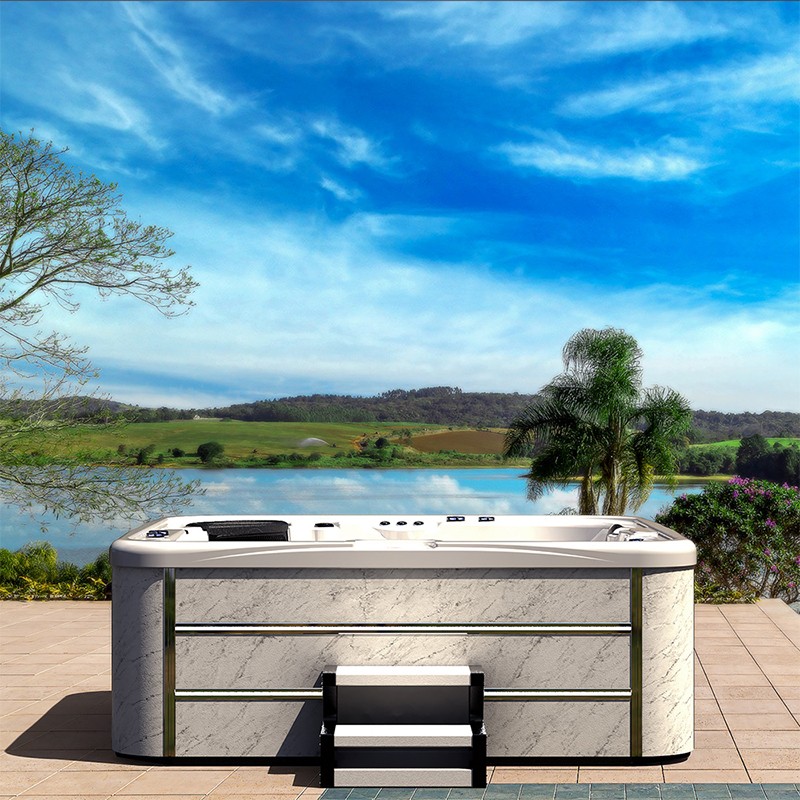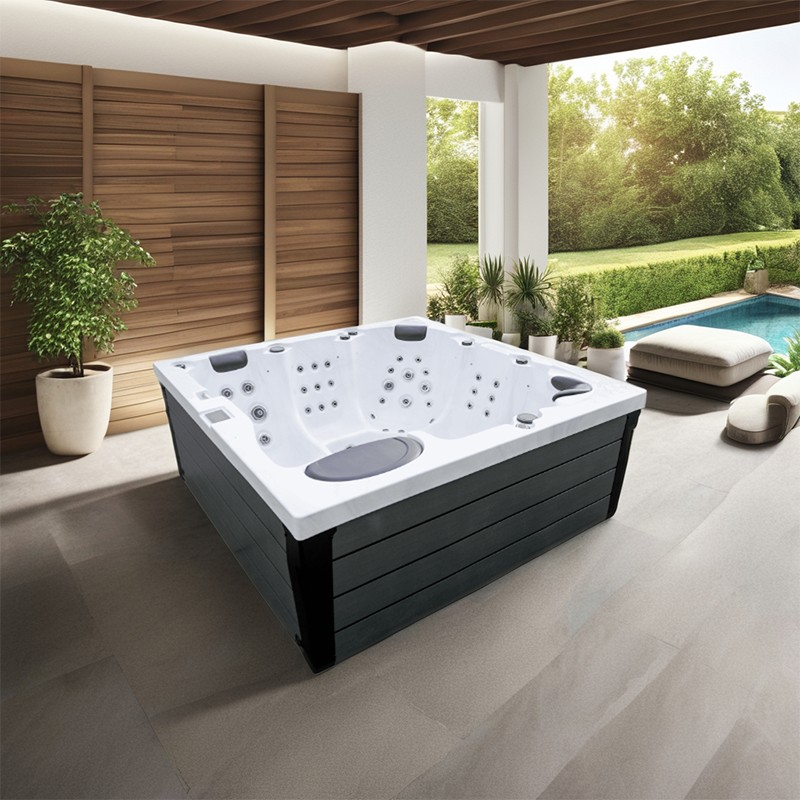
What is a plug and play hot tub? What are its advantages and disadvantages?
2024-08-16 15:30Hot tubs have become the choice of more and more families. However, the installation of traditional hot tubs is complicated and expensive, which makes many consumers stay away from it. Plug and play hot tubs came into being, providing users with a convenient and fast solution.
So, what is a plug and play hot tub? What are its advantages and disadvantages? This article will take a deep look at this emerging product to help consumers make a wise choice.

What is a plug and play hot tub?
Plug and Play Hot Tub, as the name suggests, refers to a hot tub that can be used without professional installation and can be plugged into an ordinary household power outlet. This type of bathtub usually uses a standard power supply of 110V or 120V, instead of the 220V or 240V power supply required by traditional hot tubs. The original intention of the design of the plug and play hot tub is to facilitate users, without the need for complex power transformation and professional installation, so that home users can more easily enjoy the comfort and relaxation brought by the hot tub.
What are the advantages of plug and play hot tubs?
Advantages of plug-and-play hot tubs:
1. Easy installation,
2. Low cost,
3. Portability,
4. High heating efficiency,
5. Easy maintenance.
1. Easy installation: The biggest advantage of plug-and-play hot tubs is that they are easy to install. Users only need to place the tub in a suitable location and plug it in to start using it, without the need for professional electricians to perform complex electrical wiring. Compared with traditional hot tubs, plug-and-play hot tubs save a lot of installation time and cost.
2. Low cost: Since plug-and-play hot tubs do not require complex electrical modifications and professional installation, their overall cost is relatively low. This makes it affordable for more consumers to enjoy the benefits of hot tubs. For users who have a limited budget but want to improve their quality of life, plug-and-play hot tubs are an ideal choice.
3. Good portability: Plug-and-play hot tubs are usually designed to be lightweight and easy to move and carry. Users can place the tub in different locations as needed, or even take it away when moving. This flexibility is unmatched by traditional hot tubs.
4. High heating efficiency: Although plug-and-play hot tubs use standard power, many brands excel in heating efficiency. Modern plug-and-play hot tubs are usually equipped with efficient heaters that can heat the water temperature to a comfortable level in a short time, meeting the user's needs for quick use.
5. Easy maintenance: Plug-and-play hot tubs are usually simple in design and easy to maintain. Its filtration system and water treatment equipment are also relatively simple, and users can easily perform daily cleaning and maintenance to ensure water quality and long-term use of the equipment.

What are the disadvantages of plug-and-play hot tubs?
Disadvantages of plug-and-play hot tubs:
1. Poor hydromassage effect
2. Small capacity
3. Low function and configuration
4. Performance declines after long-term use
1. Poor hydromassage effect: The pump and nozzle power of plug-and-play hot tubs are usually small, and the hydromassage effect may not be as strong as that of traditional hot tubs. If users have high requirements for massage functions, plug-and-play hot tubs may not fully meet their needs.
2. Small capacity: Plug-and-play hot tubs are usually compact in design and small in capacity. Most plug-and-play hot tubs can accommodate 2-4 people, while traditional hot tubs can accommodate more people. If there are more family members or friends often get together, capacity may become a limiting factor.
3. Low functions and configurations: Plug-and-play hot tubs are relatively simple in functions and configurations, and may lack some advanced features of high-end hot tubs, such as smart control, complex hydrotherapy systems, and diversified nozzle configurations. If users want to enjoy more functions, plug-and-play hot tubs may not be suitable.
4. Performance degradation after long-term use: Plug-and-play hot tubs are usually designed for short-term use. Due to the low power of the heater and pump, long-term use may cause the device to overheat or performance degradation. Therefore, users need to pay attention to the length of use and avoid overloading the device.

Mainstream brands and models of plug-and-play hot tubs
There are many brands on the market that offer plug-and-play hot tubs. Here are 4 well-known brands and their representative models:
1. Intex brand:
Intex PureSpa Plus: This hot tub is known for its convenient installation and high-quality massage function. It is equipped with 120 jets, providing a comfortable hydromassage experience while having good heating efficiency.
2. Coleman Brand:
Coleman SaluSpa: This bathtub is known for its durability and convenience. It has a fast heating system and multiple massage modes, suitable for family use.
3. Bestway Brand:
Bestway Lay-Z-Spa Miami: This is a cost-effective plug-and-play hot tub with a compact design suitable for small families. Its fast heating and simple control system are loved by users.
4. Lifesmart Brand:
Lifesmart Rock Solid Simplicity: This bathtub has a sturdy and durable design, provides good heat preservation performance and an efficient heating system, suitable for use in various environments.

Applicable people and usage scenarios of plug-and-play hot tubs
Plug-and-play hot tubs are particularly suitable for the following people and usage scenarios:
1. First-time buyers: For users who buy hot tubs for the first time, plug-and-play hot tubs are an entry-level choice that is affordable and easy to install.
2. Renters: Due to its portability and simple installation, plug-and-play hot tubs are suitable for renters without any modification to the house.
3. Small families: The small capacity design is very suitable for small families of 2-4 people and meets daily use needs.
4. Temporary places: For temporary places such as vacation homes and resorts, plug-and-play hot tubs can be quickly deployed to provide a comfortable spa experience.
Conclusion
Plug-and-play hot tubs have become an ideal choice for many families due to their convenient installation, low cost and high flexibility. However, they are relatively insufficient in heating speed, hydromassage effect and functional configuration. Therefore, consumers should consider their own needs and usage scenarios when choosing.
For those who want to enjoy the comfort of a hot tub at home, plug-and-play hot tubs provide a cost-effective solution. By understanding its advantages and disadvantages and the mainstream brands on the market, consumers can make more informed purchasing decisions and enjoy the relaxation and health benefits of hot tubs.
